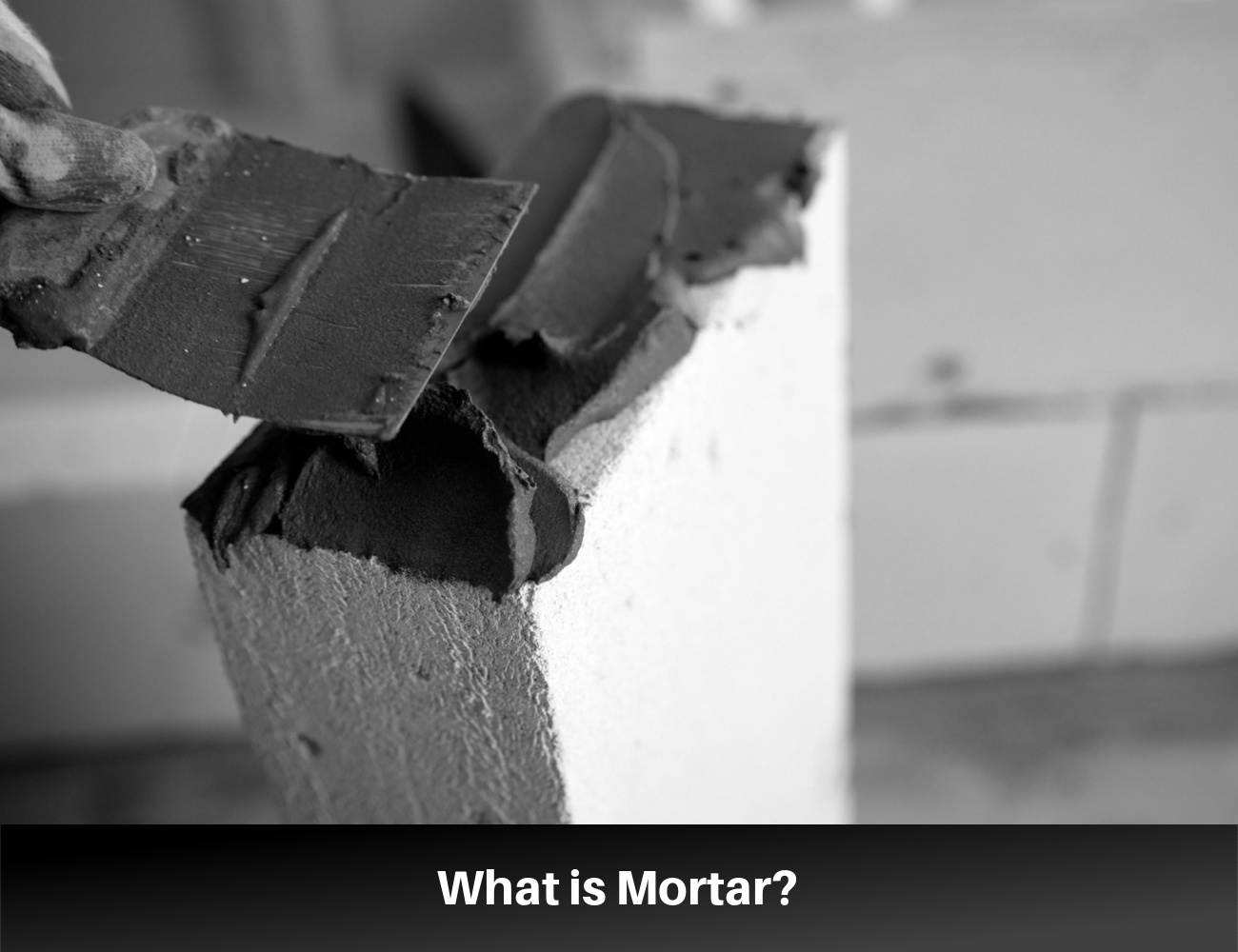The differences between mortar and grout will appear small to the outside observer, but the similarities as well as the distinctions carry the key to understanding these building materials. Both mortar and grout are vital in many types of construction applications.
Mortar is composed of cement, sand, lime, and water. It is the fundamental binder for building units like bricks, stone, and construction blocks. Grout also contains cement, sand, and water. Builders use grout to connect tiles and other materials and to create a unified surface.
Mortar Vs. Grout
While grout and mortar contain similar ingredients, their differences create their unique applications, consistencies, and strengths. Both fulfill crucial tasks in the building and construction industries.
What is Mortar?
Mortar is a binding material that contains cement, fine sand, hydrated lime, and water. Builders use mortar to bind smaller building units together to form a solid and strong single unit. Common building units bonded by mortar include bricks, stone, and building blocks made of concrete.
Key Qualities of Mortar
- Composition – Mortar’s main component is cement. The cement and lime act as a binder for the sand. The water begins the hydration process and makes the mortar harden and gain strength.
- Function – The main use of mortar is to bind smaller building units like brick and stone together. The mortar gives these units strength for load-bearing applications and resistance to environmental erosion.
- Application – Builders apply mortar in a variety of ways, including with a trowel, sprayer, and extruding from a mortar bag.
- Consistency – Mortar has a thick, paste-like consistency. This consistency allows masons to spread and form and support the weight of building units during construction.
- Curing and Strength – As mortar dries, it undergoes a process called curing in which it gains strength as it hardens. The curing time of mortar depends on various factors including the temperature, humidity, and the type of cement in the mortar mix. As the mortar dries, it gains compressive strength and durability, which contributes to the longevity and load-bearing capacity of the structure.
Types of Mortar
- Cement Mortar
- Lime Mortar
- Thinset Mortar
- Epoxy Mortar
- Polymer-modified Mortar
- Refractory Mortar
Uses of Mortar
- Masonry Construction – The most common application for mortar is to bind small units together. Builders and masons use mortar to connect bricks, stones, and blocks within a cohesive bond to form a unified whole structure.
- Repair and Restoration – Mortar is weaker than the building units and can deteriorate over time. Masons use mortar for repointing and repairing weak places within the masonry grid.
- Surface Coating – Builders use mortar to coat the interior and exterior of walls, ceilings, and other surfaces. This gives them a smooth and even finish.
- Tile Installation – A certain type of mortar, known as thin-set mortar, is used in the installation of tile. This mortar serves as an adhesive to bind the tile to the subfloor.
- Fire-Proofing – Specialized mortar, known as refractory mortar, is used with refractory bricks to bind them together in places that are exposed to high temperature. These types of bricks and mortar are common in fireplaces, chimneys, and industrial kilns.
- Decorative Applications – Builders can use mortar to create textured patterns on walls and other surfaces.
What is Grout?
Grout is a building material that is used to fill the gaps or joints between tile and stone. Like mortar, grout contains cement, sand, and water, though the exact amount of each component varies depending on the type of grout that someone wants to create.
Key Qualities of Grout
- Composition – Grout and mortar have the same basic components including cement and water. One of the main differences in the composition of these materials is the water content. Grout has more water to make it pourable. Grout also has other additives that make it more pliable, possibly including polymers, acrylic, and/or epoxy.
- Function – Builders use mortar to fill the gaps and joints between solid building units like tile. Grout creates a protective barrier between tiles and prevents water from seeping through the units and ruining the subfloor below.
- Application – Grout is mainly used in tiling projects. It is applied
- Consistency – Grout has a more fluid consistency than mortar as it contains more water and additives that give it more plasticity. This consistency allows it to flow easily into place between tiles both large and small.
- Strength – Grout does contain some compressive strength, but it has less strength than mortar. Unlike mortar, grout provides stabilization and a seal for the joints between the tiles rather than providing structural support.
Types of Grout
- Sanded Grout
- Non-sanded Grout
- Epoxy Grout
- Urethane Grout
- Acrylic Grout
Uses of Grout
- Tile Installation – Grout is primarily used for filling, securing, and sealing the joints, or grid, between tiles. Grout is useful for practical purposes such as keeping out water and debris from between tiles. It also enhances the aesthetics of the tile because builders use interesting colors and patterns of grout to enhance the tile design.
- Repair and Restoration – Grout is susceptible to deterioration and discoloration over time. By removing the old grout, builders can apply new grout to maintain the structural integrity and look of the tile design.
Are Mortar and Grout Interchangeable?
No, they are not interchangeable. Even though they are similar, you should never use grout and mortar in the place of one another. Builders use both mortar and grout in tile jobs. Mortar for securing the tile to the subfloor and grout for filling the open grid between tiles.
Mortar has a much lower water-to-cement ratio than grout, so it has less plasticity. Mortar will not flow easily into small, nook-like spaces like grout. Mortar is also stronger than grout because it has been specifically formulated to provide strength and durability when holding building units together or adhering tiles to a surface.
Grout has key advantages over mortar in terms of aesthetics. While manufacturers do formulate mortar in different colors like beige, white, and red to complement masonry units of different types, most mortar is gray. Grout is available in a wider range of color choices to enhance the wider variety of tile colors and styles.




